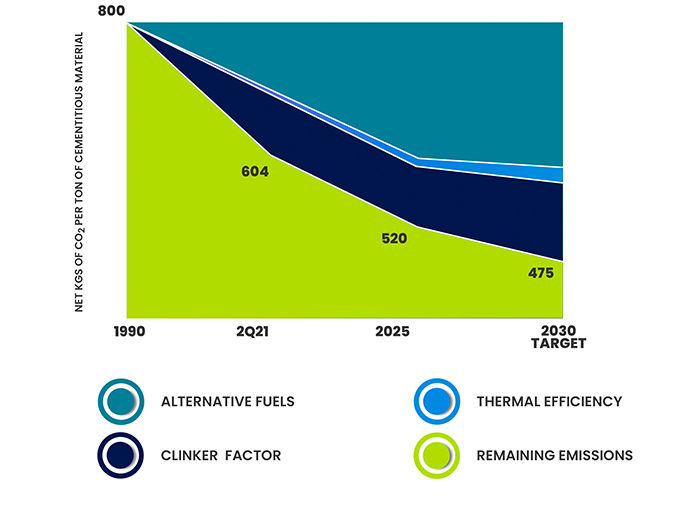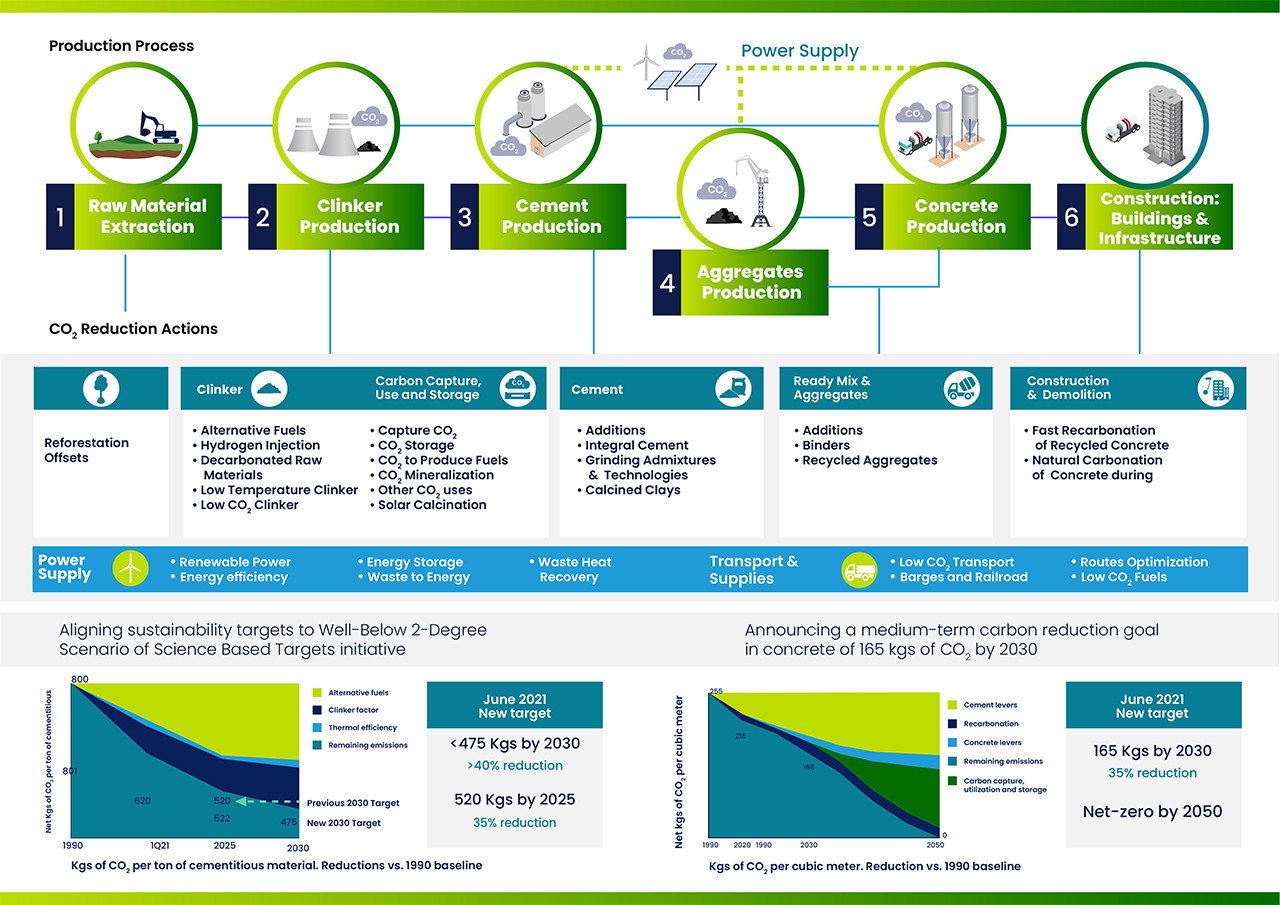
DECARBONISING OUR OPERATIONS
Our Pathway to Carbon Neutrality
Future in Action starts in our operations. We are evolving our production process to reduce its carbon footprint every step of the way.

Future in Action starts in our operations. We are evolving our production process to reduce its carbon footprint every step of the way.
Future in Action concentrates on maximising four levers to reduce our carbon emissions, and achieve our 2030 goals:

Alternative fuels can eliminate our reliance on fossil fuels, powering our kilns while also providing other benefits for the environment. Alternative fuels, particularly biomass, are a byproduct of humanity, which otherwise end up in landfills. The ensuing decomposition generates methane, a greenhouse gas up to 80 times more harmful to the environment than CO2.
Co-processing is a more efficient waste management solution than landfilling, and incineration, this means that the cement industry is a net consumer of waste and contributes to a more Circular Economy.
There are four main benefits of co-processing for climate action:
Clinker, the key component of cement, is produced by fusing together limestone, clay, and other materials in a rotary kiln at temperatures nearing 1500 Celsius. This is a very energy-intensive and carbon-emitting process. In fact, most direct CO2 emissions in the cement production process are generated by the chemical reaction of clinker production in our kilns.
Our efforts concentrate on substituting it with byproducts from other industries like blast furnace slag, and fly ash. Waste from other industries and alternative raw materials allow us to reduce the clinker factor while maintaining the same quality and durability of our products. Our new clinker types have up to 20% lower CO2 emissions.


During 2021, around 30% of our operation’s power came from clean energy sources. Through this action, our indirect emissions, related to the electricity consumed in our plants, also contribute to reducing our carbon footprint.
In 2021 we achieved our best performance ever in the use of alternative fuels, clean electricity consumption, and the largest annual reduction in clinker factor in the last 10 years.
Future In Action is a long-term program which will continue to work on our production process to reduce our carbon footprint and meet our 2050 goal of delivering only net-zero CO2 concrete.
